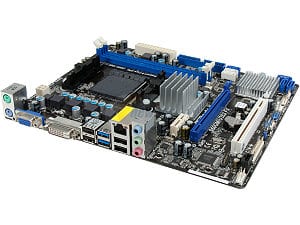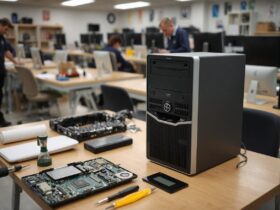Motherboards are the main printed circuit board (PCB) in a computer that connects all of the hardware components together. It is the central hub that allows the processor, memory, storage, and other components to communicate and work together. The motherboard also provides connectors for peripherals such as a display, keyboard, and mouse. It is a crucial component in any computer system, as it controls how all of the other components function and interact.
When building or upgrading a computer, choosing the right motherboard is an essential step. In this article, we will provide an overview of key motherboard specifications, explain why compatibility is critical, discuss the motherboard options that matter most, and provide tips on how to choose the best motherboard for your needs.
Overview of Key Motherboard Specifications
There are several key specifications to consider when choosing a motherboard. The first is the form factor, which refers to the size and shape of the motherboard. The most common form factors are ATX, microATX, and mini-ITX. ATX is the largest and most feature-rich form factor, while microATX and mini-ITX are smaller and more compact options. The form factor you choose will depend on the size of the case you are using and the components you want to install.
Another important specification is the socket type, which determines the type of processor the motherboard can support. There are many different socket types, including LGA1151, AM4, and TR4, each of which is compatible with a specific range of processors. Make sure to choose a motherboard with a socket type that is compatible with your CPU.
Other key motherboard specifications to consider include the number and type of memory slots, the number and type of expansion slots, the number and type of storage connectors, and the presence of features like Wi-Fi, Thunderbolt, and RGB lighting.
Compatibility is Critical
Compatibility is a crucial consideration when choosing a motherboard. In addition to the form factor and socket type, you need to ensure that the motherboard is compatible with your other components, such as the graphics card, power supply, and storage devices. For example, if you have a powerful graphics card, you will need a motherboard with a strong power delivery system (also known as the voltage regulator module or VRM) to support it. Similarly, if you have a fast NVMe SSD, you will need a motherboard with an M.2 slot to take advantage of its speed.
What Motherboard Options Matter Most?
When shopping for motherboards, several options are worth considering. For example, if you are building a gaming PC, you may want a motherboard with multiple graphics card slots, strong VRM, and lots of fan headers to keep your system cool. If you are building a content creation PC, you may want a motherboard with Thunderbolt support, high-quality audio codec, and plenty of storage connectivity options.
If you are building a small form factor PC, you may want a mini-ITX motherboard with Wi-Fi and RGB lighting support. And if you are building a mid-sized PC, a microATX motherboard with lots of expansion slots and easy overclocking features may be a good choice.
How Do I Choose the Best Motherboard?
When choosing the best motherboard for your needs, it’s important to consider your budget, the components you want to install, and the features you want to use. Start by identifying the form factor, socket type, and compatibility requirements for your system. This is not a small task, because you are essentially designing your entire computer before choosing a motherboard. Because nearly everything that you will install in your PC will connect to the motherboard, you must choose your components first and make sure that every component can properly interface with the motherboard you choose. If you aren’t careful, you could find yourself stuck with a graphics card that works with one motherboard and a processor that works with a different motherboard. If you don’t catch that early, then you’ll buy a motherboard that works for one component, but not the other.
Once your design is done, consider the motherboard options that matter most to you and compare them to your budget. The biggest step is the compatibility discussed above, but after that’s done, each motherboard has its own features that are separate from how it interfaces with components. Don’t forget to read reviews and check the manufacturer’s website for detailed specifications and features.
Conclusion
A motherboard is a crucial component in any computer system. By understanding the key specifications, the importance of compatibility, and the options that matter most for your needs, you can choose the best motherboard for your needs and build a system that meets your performance and feature requirements. We’ll dive deeper into motherboard features in our next post!














Leave a Reply